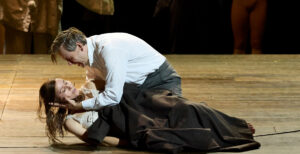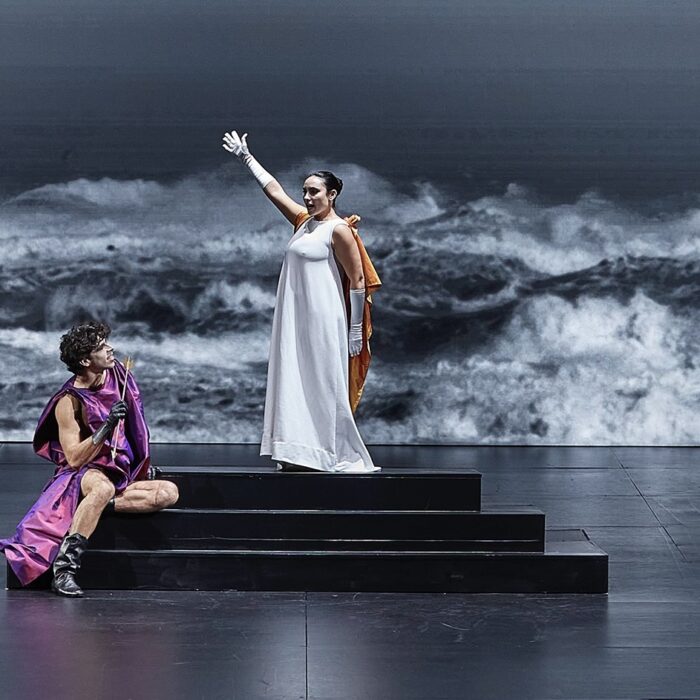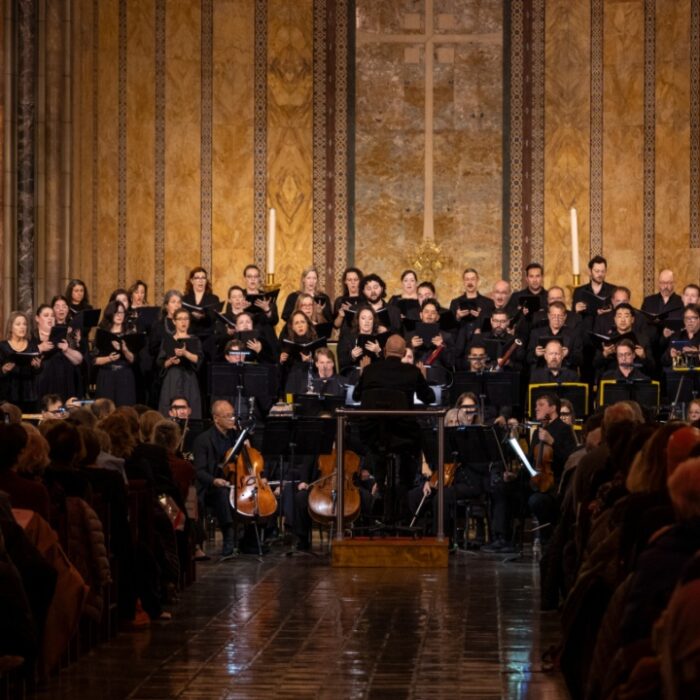
Opernhaus Zürich 2025-26 Review: Manon
By Laura Servidei(Photo:
Antoine François Prévost’s novel, “The Story of the Chevalier des Grieux and Manon Lescaut,” was published in France in 1731 to great success. Its scandalous subject matter—featuring protagonists who live together out of wedlock, a Manon obsessed with greed to the point of prostitution, and a des Grieux who cheats at cards for money, with both ultimately landing in prison—generated significant controversy and public interest.
A Shift in Era: From Rococo to Belle Époque
Jules Massenet’s 1884 opera stands as one of the most celebrated operatic adaptations of this story, its Romantic style being particularly well-suited to the tale of desperate love. Director Floris Visser relocates the narrative from the 18th century to the Belle Époque. While this change does not add significant new depth, it is not detrimental to the plot, as the morals of the late 19th century still justify the characters’ behavior, and the era’s aesthetics are visually pleasing. The ballet in Act three, set to 18th-century style music, was performed in a correspondingly period style—a successful directorial choice.q
The primary historical difference is that, during the Belle Époque, France no longer had colonies in America, the place to which Manon is deported after her imprisonment. However, the librettists Henri Meilhac and Philippe Gille also altered her fate; instead of dying in the Louisiana wilderness as in the novel, she dies in the harbor at Le Havre.
The staging by Stephanie Lentzen consists of a single room that, with minimal props, becomes the various locations of the story. This creates a claustrophobic environment where, for instance, the chorus is on stage only while singing and often stands still in formal arrangements. This approach results in a lack of crowd scenes: the inn in Amiens, where Manon and des Grieux first meet, is nearly deserted, as is the harbor at Le Havre, while the mass at the Church of Saint-Sulpice takes place behind a backdrop.
Conductor Sesto Quatrini led the Zurich Opera Orchestra in an intense and emotionally rich interpretation of the score. The sound was both powerful and beautiful, yet always respectful of the singers, providing them space while offering solid support. The cast was truly fit for a grand occasion.
Oropesa and Bernheim: The Perfect Romantic Couple
Lisette Oropesa and Benjamin Bernheim formed the perfect Romantic couple, their voices ideally suited to the style. Oropesa’s sweet, silvery soprano produced effortless and spectacular high notes that seemed to float magically through the theatre. Her trills were superb, and her interpretation was intelligent and thoughtfully crafted. She convincingly conveyed the innocence and vanity of a sixteen-year-old girl in the first act. When her character, living in poverty with her lover in Paris, decides to leave him for a wealthy suitor, her final words of regret for her lost love were heartbreaking (“Adieu, notre petite table”). Oropesa masterfully captured all the conflicting emotions of the confused teenager.
One of the highlights of her performance occurred in the third act, where Manon, adorned in rich clothes and jewelry, strolls through the Cours de la Reine amidst other wealthy patrons, vendors, and entertainers on a holiday. She sings of love and youth while the chorus responds, yet it is clear she is thinking with regret of des Grieux and their happier days. The scene faintly recalls the famous toast in Verdi’s “Macbeth,” where the singer forces a cheerful tone for the crowd while being devastated within. Oropesa’s interpretation was subtle and masterful, her voice trembling slightly. This nuanced acting made the subsequent appearance of des Grieux in his robe (a sort of Banquo’s ghost, pedagogically informing the audience of her sadness) an unfortunate and unnecessary directorial choice.
Bernheim’s bright and luminous tenor conveyed all the youthful ardor of des Grieux (who is seventeen in the novel) while his native French made his singing natural, spontaneous, and engaging. His high notes were effortless and powerful, capturing the enthusiasm of a young man in love for the first time, and his vocal emission was elegant, stylish, and dynamically rich.
The first-act duet, in which the two youngsters plan their life together in Paris, projected an infectious joy. Bernheim’s mezza voce was exquisite, and the dream aria ‘En fermant les yeux’ was appropriately dreamy and moving. He demonstrated his full dramatic range in the scene at Saint-Sulpice, where des Grieux, after Manon’s abandonment, resolves to take holy orders, only for Manon to arrive and dissuade him at the last moment. Bernheim masterfully expressed the character’s conflicting emotions—resolute in his vows yet powerless to resist his first love, culminating in his capitulation.
In the fourth act, where des Grieux turns to gambling and drinking in a desperate attempt to secure the money that will keep Manon from leaving him again, Bernheim’s voice took on a darker, truly desperate quality, rendering his interpretation masterful.
A Strong Supporting Ensemble
Yannick Debus, a young singer who was until recently a member of the Zurich Opera Studio, made an impressive debut as Lescaut, Manon’s gambling and drinking cousin. His baritone was both powerful and elegant, and his committed acting was matched by a remarkable stage presence.
The three coquettes—Poussette, Javotte, and Rosette—were portrayed by Yewon Han, Rebeca Olvera, and Karima El Demerdash. Their interventions as the guests of wealthy, older patrons were delivered with spark, brilliance, and precision. Han’s crystalline soprano floated effortlessly above the densest orchestral textures, while Olvera’s golden soprano provided depth and substance to their ensemble. El Demerdash’s remarkable mezzo-soprano offered a stable foundation.
Nicolas Testé, as the Count des Grieux, the father of Manon’s lover, possessed a smooth and well-projected bass, his interpretation conveying the requisite gravitas.



